
The three main areas of work set by the IUCN Global Programme together with the priorities identified by IUCN Members and partners in the Mediterranean constitute the four-year framework for projects and activities at the IUCN Centre for Mediterranean Cooperation. These projects and activities are developed and implemented by the Malaga office Secretariat in the past two years combined the efforts and participation of many of the 203 IUCN Member organizations and 1,600 IUCN Commission experts in the region.
Built on the IUCN vision, a just world that values and conserves nature, the work of IUCN-Med in 2014 and 2015 is highlighted in this report according to the main IUCN global programme areas for 2013-2016. In addition to the IUCN Mediterranean Programme, the resolutions and recommendations adopted by IUCN Members during the IUCN World Congress 2012 held in Jeju and directly affecting the Mediterranean, also led the action of IUCN Members and partners in the region, in particular:
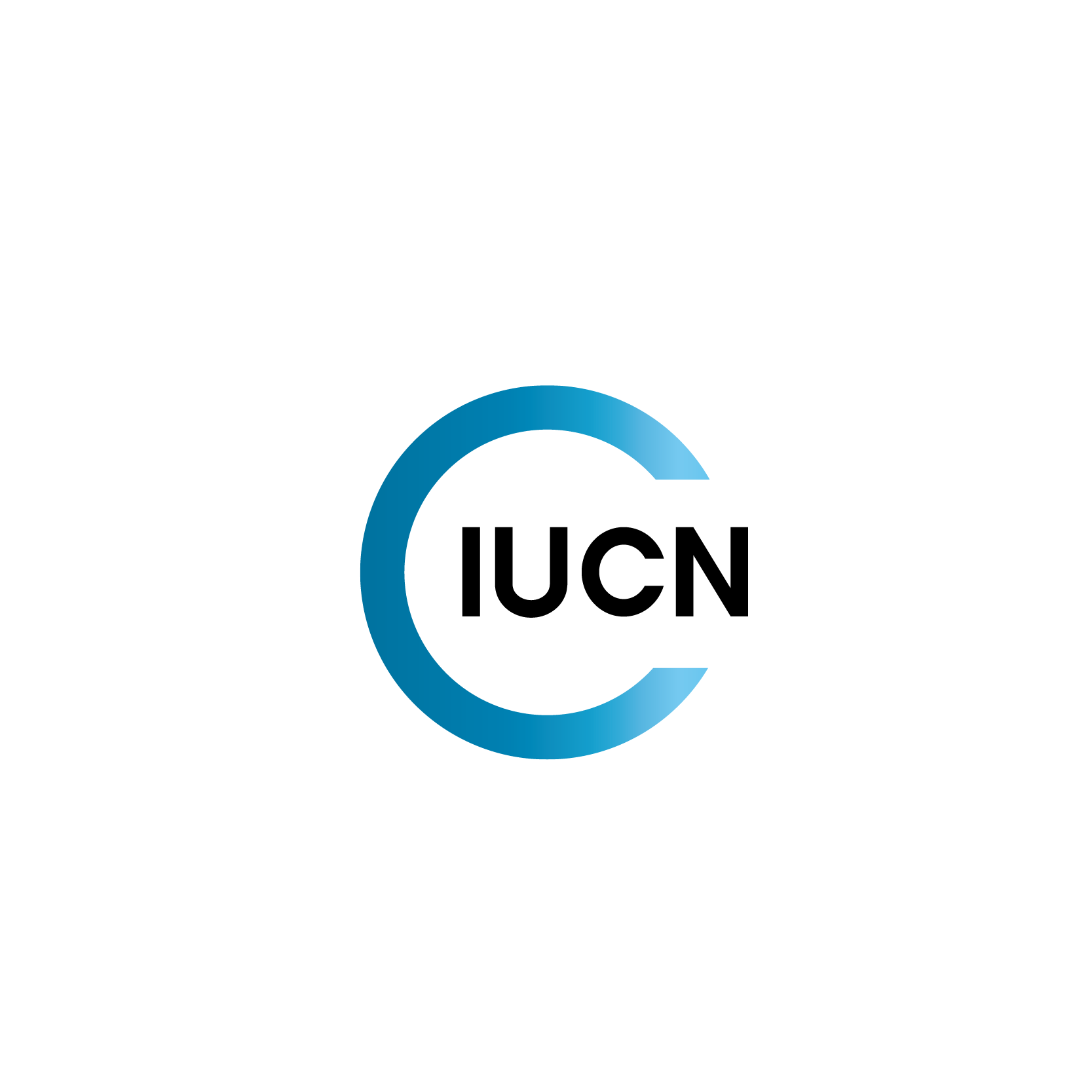

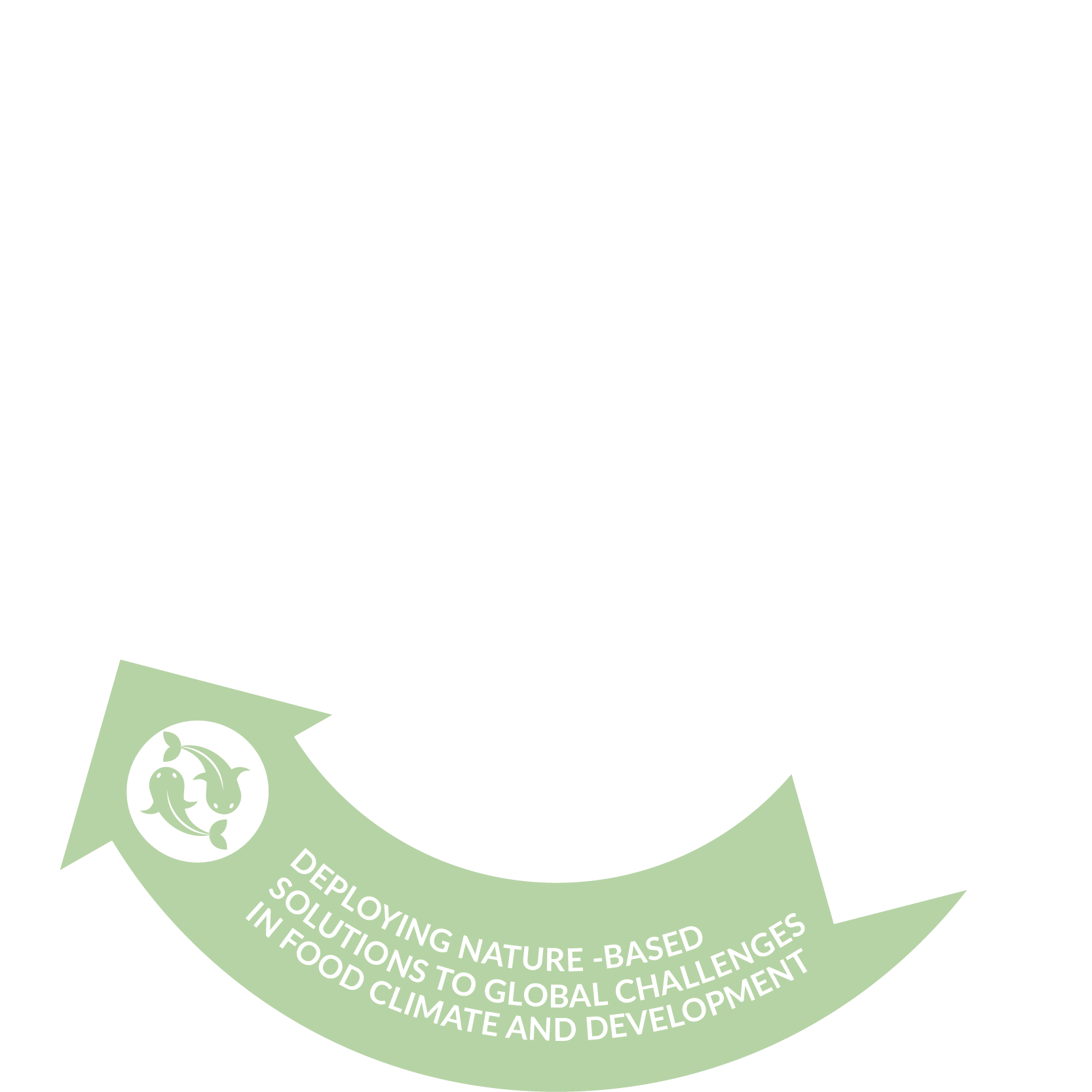

The IUCN One Programme structure is accompanied now by the new strategic programme of work aligned with the MAVA Foundation, as it has become one of the key donors supporting the IUCN office for the Mediterranean. This new agreement involves work in the following priority areas.
Additionally, the IUCN North Africa Conservation Forum in Cairo, Egypt in October 2015 has provided the opportunity to compile further recommendations and priorities from regional organizations and IUCN Members including NGOs and governments for the new subregional programme of work for North Africa to be adopted in 2016 and strengthen the presence of IUCN’s work and partners in the region.
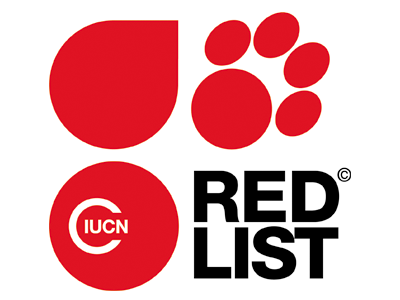 New Red Lists of Threatened Species for the Mediterranean region are underway for around 3800
terrestrial and marine species being assessed by the IUCN Centre for Mediterranean Cooperation
with the support of species experts from the IUCN Species Survival Commission, the Red
List Unit and the IUCN Global Marine Assessment programme. Of the total number of species
under study, the results of this new Mediterranean Red Lists of Threatened Species are
revealing the status, distribution and major threats for 426 butterfly, 550 saproxylic
and 232 dung beetles, 1500 monocotyledon plant, 138 anthozoan and 3 seagrass species.
These taxonomic groups are of the most unknown and underrepresented groups in the Red List.
Among these, 365 butterflies’ regional assessments are already published in the official RL website.
Species assessments for the remaining species are currently under review and are expected to be
published in 2016.
New Red Lists of Threatened Species for the Mediterranean region are underway for around 3800
terrestrial and marine species being assessed by the IUCN Centre for Mediterranean Cooperation
with the support of species experts from the IUCN Species Survival Commission, the Red
List Unit and the IUCN Global Marine Assessment programme. Of the total number of species
under study, the results of this new Mediterranean Red Lists of Threatened Species are
revealing the status, distribution and major threats for 426 butterfly, 550 saproxylic
and 232 dung beetles, 1500 monocotyledon plant, 138 anthozoan and 3 seagrass species.
These taxonomic groups are of the most unknown and underrepresented groups in the Red List.
Among these, 365 butterflies’ regional assessments are already published in the official RL website.
Species assessments for the remaining species are currently under review and are expected to be
published in 2016.
The Eastern Mediterranean region has also benefited from the achievement of a Red List of Freshwater species under threat. Of the 1,236 species of freshwater fish, mollusc, odonatan (dragonfly and damselfly), freshwater plant, bird, amphibian, crustacean, and mammal, 368 species (29.8%) are endemic to the Eastern Mediterranean region (i.e. they are found nowhere else in the world).
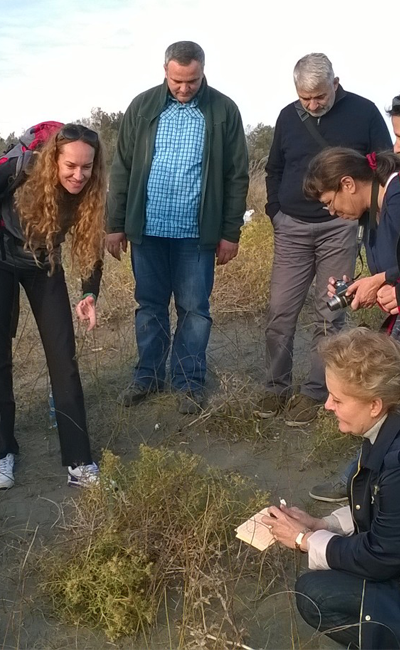 The project on Key freshwater biodiversity areas in the Mediterranean
has resulted in the identification of 167 sites in the Mediterranean
Basin covering a total area of 302,557 km2. These results set the
ground for the creation of a network of representative protected areas
for freshwater species, providing at the same time information on key
sites for freshwater biodiversity for public managers responsible for
the conservation and sustainable management of freshwater resources in
the Mediterranean basin. Additional workshops held in November 2015
have provided a stakeholder’s validation of freshwater Key Biodiversity
Areas in North Western Mediterranean according to newly set criteria.
At North Africa level, 43 key freshwater biodiversity sites have been
identified, with 88% of them located outside protected areas. These are
considered crucial at international level for the conservation of
threatened species and sites.
The project on Key freshwater biodiversity areas in the Mediterranean
has resulted in the identification of 167 sites in the Mediterranean
Basin covering a total area of 302,557 km2. These results set the
ground for the creation of a network of representative protected areas
for freshwater species, providing at the same time information on key
sites for freshwater biodiversity for public managers responsible for
the conservation and sustainable management of freshwater resources in
the Mediterranean basin. Additional workshops held in November 2015
have provided a stakeholder’s validation of freshwater Key Biodiversity
Areas in North Western Mediterranean according to newly set criteria.
At North Africa level, 43 key freshwater biodiversity sites have been
identified, with 88% of them located outside protected areas. These are
considered crucial at international level for the conservation of
threatened species and sites.
The project "Promoting the value of key biodiversity areas through the involvement of civil society organizations in their conservation and management in North Africa" is a subregional project aimed at improving the management and governance of protected areas and key biodiversity areas namely in Algeria, Libya, Morocco and Tunisia. Relying on its network of partners, IUCN-Med will set up a framework for dialogue between different stakeholders, representing government, civil society and research institutes. Collaboration Agreements signed with the relevant authorities responsible for the KBA management aim at monitoring the project activities, ensuring the involvement of other partners in training activities, and validating the different deliverables elaborated under the project. Additionally, key freshwater biodiversity areas in the north-western part of the Mediterranean covering the Iberian Peninsula, southern France and most of Italy have now been identified during a workshop held in Madrid in November 2015, with the assistance of some 20 freshwater biodiversity experts and the IUCN Freshwater Biodiversity Unit.
On the other hand, the IUCN-Med initiative to develop plant conservation actions in the South and East of the Mediterranean region (including north Africa, middle east and Balkans) combines the expertise of Plantlife International and IUCN in documenting the status and distribution of selected plant species and habitats, including a list of selected endemics and habitat distribution as tools for conservation and management. The project will undertake plant conservation and management actions on selected IPAs; ensure the transfer of results to relevant policy mechanisms at national, regional and global level; and improve communication mechanisms and networking among practitioners for plant conservation.
Another line of work offering first results in 2014 has been the Red List of Ecosystems. Within the project POCTEFEX-TRANSHABITAT, the Red List of Forest Ecosystems in Morocco has been finalized and is currently under validation. The work of experts is helping identify if an ecosystem is vulnerable, endangered or even critically endangered, based on a set of internationally accepted criteria regarding the assessment of the risk of collapse. In the same area, IUCN-Med staff is also participating in the development of the Red List of Habitats in Europe which is coordinated by the IUCN office in Brussels.
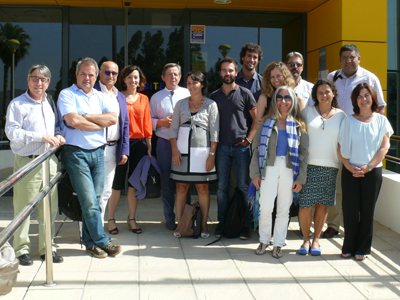 Nine environmental international organizations across the Mediterranean
gathered in July in Malaga to discuss how to give shape to an
initiative that seeks cooperation in the field of biodiversity data and
information in the region. This was the second meeting of a think-tank
made up of institutions such as ACCOBAMS, Tour du Valat/Mediterranean
Wetland Observatory, UNEP Mediterranean Action Plan /Plan Blue, the
Regional Activity Centre for Specially Protected Areas (RAC/SPA) of
Barcelona Convention, the network of Mediterranean marine protected
area managers (MedPAN), WWF Mediterranean Programme, and IUCN-Med.
The regional government of Andalusia and the Spanish Ministry of
Agriculture, Food and Environment were invited along with the European
Environmental Agency and the European Topic Centre on Biological
Diversity.
Nine environmental international organizations across the Mediterranean
gathered in July in Malaga to discuss how to give shape to an
initiative that seeks cooperation in the field of biodiversity data and
information in the region. This was the second meeting of a think-tank
made up of institutions such as ACCOBAMS, Tour du Valat/Mediterranean
Wetland Observatory, UNEP Mediterranean Action Plan /Plan Blue, the
Regional Activity Centre for Specially Protected Areas (RAC/SPA) of
Barcelona Convention, the network of Mediterranean marine protected
area managers (MedPAN), WWF Mediterranean Programme, and IUCN-Med.
The regional government of Andalusia and the Spanish Ministry of
Agriculture, Food and Environment were invited along with the European
Environmental Agency and the European Topic Centre on Biological
Diversity.
Discussions will continue in 2016 to achieve more integrated and efficient information as to develop a state and trends of the biodiversity in the Mediterranean to influence policy-makers about the importance of preserving our environment, and how each organization can contribute with their resources and expertise. This initiative will go in parallel with the promotion of a network of media agencies and journalists interested in improving the quality and quantity of environmental news and information for the region.
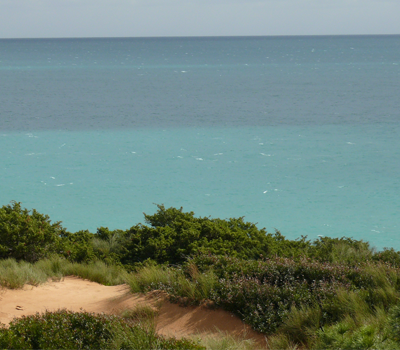 At marine level, coordination with major regional institutions such as
the Barcelona Convention continues to identify and propose new key
marine areas for protection based on the most recent scientific
ecosystem and species information. This area of work involves
particularly sites beyond national jurisdiction, which involves most
of the Mediterranean Sea, and deep and high sea areas. To this end,
several initiatives underway are compiling and analyzing the current
legislative framework for sea protection at country and regional levels
with a view to propose improvements and policy changes for the
designation and the implementation of more effective tools designating and managing for marine
protected areas. ICN-Med is also assisting the CBD and UNEP in the identification of Ecologically or Biologically Significant Areas (EBSAs)
in underrepresented regions, in particular in North Africa and the
eastern Mediterranean.
At marine level, coordination with major regional institutions such as
the Barcelona Convention continues to identify and propose new key
marine areas for protection based on the most recent scientific
ecosystem and species information. This area of work involves
particularly sites beyond national jurisdiction, which involves most
of the Mediterranean Sea, and deep and high sea areas. To this end,
several initiatives underway are compiling and analyzing the current
legislative framework for sea protection at country and regional levels
with a view to propose improvements and policy changes for the
designation and the implementation of more effective tools designating and managing for marine
protected areas. ICN-Med is also assisting the CBD and UNEP in the identification of Ecologically or Biologically Significant Areas (EBSAs)
in underrepresented regions, in particular in North Africa and the
eastern Mediterranean.
Together with the French Agency of Marine Protected Areas, the first Mediterranean Deep-Sea Ecosystems meeting was organized in 2015 at Station marine d´Endoume (IMBE, Marseille, France) to examine current and past research programmes relevant to conservation of deep sea ecosystems in the region and discuss views and proposals to guide an effective strategy and action plans for Mediterranean deep-sea conservation, management and monitoring. The newly published Atlas of the Mediterranean Seamounts is also providing significant information potentially leading to consideration in the future as marine conservation or protection areas, based on their importance for different species. Additionally, in cooperation with ACCOBAMS, an Assessment of whale watching activities in the Gibraltar Strait has started in 2015.
In addition to influencing current governance models for a better management of marine resources, a common feature of the initiatives developed in the past two years has been the efforts to increase the capacity to understand and deal with the effects of climate change and human related impacts affecting Mediterranean marine protected areas and improving the management of artisanal fishing in and around MPAs. The involvement of additional Mediterranean communities beyond governments and institutions has been pursued for artisanal tourism and related actors, divers and local businesses has been sought through initiatives like MedMIS to improve monitoring of marine invasive species in MPAs or the MEET project to sustain the deployment of sustainable tourism practices in key protected areas with the involvement of nearby communities.
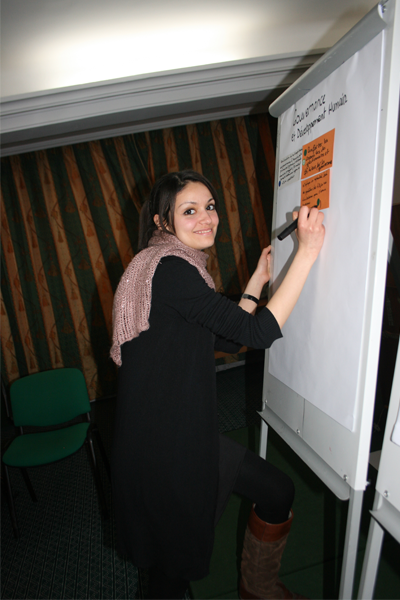 Support and training is being provided to three countries in North
Africa to prepare conservation strategies and national action plans
for emblematic species like the Great Bustard (Otis tarda) in Morocco,
the macaque (Macaca Sylvanus) in Algeria and the Barbary sheep
(Ammotragus lervia) in Tunisia, as well as a transnational conservation
strategy for the Cuvier’s gazelle (Gazella cuvieri) in the Maghreb.
IUCN’s approach has involved to date the participation of around 70
stakeholders ranging from public authorities, conservation planning
specialists and NGOs in the review of the status and distribution of
these species and the identification of major threats and key priority
actions to ensure their survival in the short and medium term. To be
published shortly, IUCN-Med is already working on mobilizing resources
and commitments to implement urgent actions identified in the action
plans in the coming months. In addition, a workshop on birds of prey
and their conservation across countries has highlighted the key aspects
to consider for the joint management and monitoring of ten species of
birds of prey to be found in Spain and North Africa, with the
involvement of public authorities, the corporate sector and the
conservationist community.
Support and training is being provided to three countries in North
Africa to prepare conservation strategies and national action plans
for emblematic species like the Great Bustard (Otis tarda) in Morocco,
the macaque (Macaca Sylvanus) in Algeria and the Barbary sheep
(Ammotragus lervia) in Tunisia, as well as a transnational conservation
strategy for the Cuvier’s gazelle (Gazella cuvieri) in the Maghreb.
IUCN’s approach has involved to date the participation of around 70
stakeholders ranging from public authorities, conservation planning
specialists and NGOs in the review of the status and distribution of
these species and the identification of major threats and key priority
actions to ensure their survival in the short and medium term. To be
published shortly, IUCN-Med is already working on mobilizing resources
and commitments to implement urgent actions identified in the action
plans in the coming months. In addition, a workshop on birds of prey
and their conservation across countries has highlighted the key aspects
to consider for the joint management and monitoring of ten species of
birds of prey to be found in Spain and North Africa, with the
involvement of public authorities, the corporate sector and the
conservationist community.
To strengthen the capacity of civil society for environment conservation in North Africa, 249 applications received from young civil society organizations in Algeria (55), Libya (10), Morocco (78) and Tunisia (106), have been evaluated and 53 projects entered the second selection phase in the PPI-OSCAN project. This phase consisted in preparing a full proposal, after receiving the necessary training organized by four national Programme coordinators based respectively in Algiers, Tripoli, Rabat and Tunis. A total of 38 proposals have now been selected for implementation in 2016. Information on key actors and topics covered can be accessed in here
In relation to ecotourism, different activities have been conducted to improve the skills of MEET Members where 1 and 2 day visit training workshops were organized for the 8 countries participating in the MEET project between February 16 – 22 March 2015, to redefine the products that make up the MEET Catalogue and to establish a shared vision among Protected Area managers and local tour operators. A regional ecotourism and interpretation training workshop was organized by IUCN ROWA for Tour Leaders, Guides and Local Tour operators. Twenty four participants from Lebanon, Greece, Italy, Spain, Jordan, France and Tunisia benefitted from the training. IUCN has also co-organized with the Royal Society for Conservation of Nature a Study Tour to Jordanian Protected Areas for 12 representatives of public administration and civil society organizations from Algeria, Libya, Morocco and Tunisia in the framework of the IUCN-Med/CEPF project on valuing key biodiversity areas in North Africa.
In the framework of legislation and international protocols affecting the Mediterranean, IUCN-Med has strengthened its presence and tightened links at various levels, in particular:

Collaboration with the Barcelona Convention continues to be reinforced in particular as related to the Specially Protected Areas and Biological Diversity Protocol (SPA/BD Protocol) and the Protocol on Integrated Coastal Zone Management (ICZM). IUCN-Med is collaborating with UNEP-MAP-RAC/SPA to define priority areas, including supporting countries in describing Specially Protected Areas of Mediterranean Interest (SPAMIs), to present to the Contracting Parties to the Barcelona Convention and providing the assessment for the red list of Mediterranean anthozoans for evaluation as part of the list of endangered species the Annexes of the SPA/BD Protocol.
Contributions to the implementation of the Convention on Biological Diversity have focused on the process of identification and designation of new ecologically or biologically significant marine areas (EBSAs) through the organization of Mediterranean regional workshop in Malaga in 2014 in cooperation with the Secretariat of the Barcelona Convention/Mediterranean Action Plan (UNEP/MAP), which resulted in an agreement on descriptions of 17 areas meeting EBSA criteria.
 To optimize resources allocated to IUCN initiatives supporting civil
society organizations, a coordination meeting with the Union for the
Mediterranean Secretariat took place in July 2015 to complement actions
specifically through the UfM Blue Green project and IUCN PPI-OSCAN
(Small Scale Initiative Programme for CSOs in North Africa). Discussions
have also taken place with the UfM and with UNEP/Mediterranean Action
Plan, WWF Med Programme, University of Barcelona and MedPan (Association
of Mediterranean Marine Protected Areas Managers) to launch a joint
initiative on governance of Mediterranean Ecologically or Biologically
Significant Areas (EBSAs).
To optimize resources allocated to IUCN initiatives supporting civil
society organizations, a coordination meeting with the Union for the
Mediterranean Secretariat took place in July 2015 to complement actions
specifically through the UfM Blue Green project and IUCN PPI-OSCAN
(Small Scale Initiative Programme for CSOs in North Africa). Discussions
have also taken place with the UfM and with UNEP/Mediterranean Action
Plan, WWF Med Programme, University of Barcelona and MedPan (Association
of Mediterranean Marine Protected Areas Managers) to launch a joint
initiative on governance of Mediterranean Ecologically or Biologically
Significant Areas (EBSAs).
IUCN-Med participated in the Mediterranean Commission on Sustainable Development (MCSD) Steering Committee meeting in June 2014 to initiate the review of the Mediterranean strategy following recommendations adopted by the contracting parties of the Barcelona Convention at the last COP Meeting in Istanbul, December 2013. The new strategy on sustainable development for the Mediterranean was adopted during the 16th Meeting of the MCSD in Marrakech in June 2015. The Steering Committee is composed by representatives of the Plan Bleu, Mediterranean Action Plan/PNUE, Malta, Egypt, France and two regional organizations. From January 2016 onwards, IUCN-Med will become full member of the Commission and the IUCN Green List of Protected Areas has been included in the strategy as one of the main tool to achieve a good conservation status of Mediterranean protected areas.
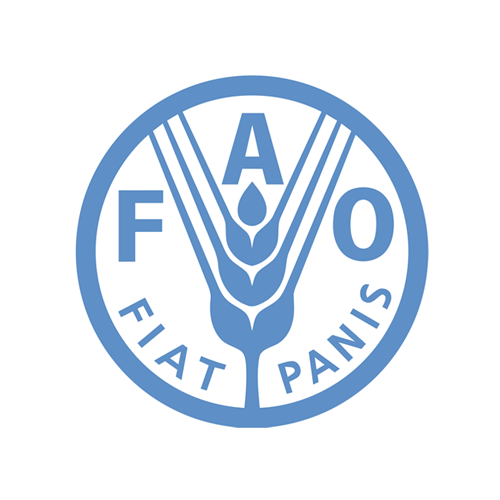 The coordination of activities with the GFCM concerning the conservation
of Mediterranean marine resources and ecosystems continues through the
participation in relevant scientific committees, the organization of
joint missions and a better coordination of Mediterranean contributions
to conservation. This was reflected in the agreement signed between IUCN
and GFCM in May 2014. A meeting between the Executive Secretary of the
GFCM on 30 October 2015 in Malaga, for the follow up of the activities
in 2016 and 2017 to focus on (a) the development of small scale fisheries
and aquaculture inside and around marine protected areas, (b) the
analysis of existing spatial management measures applied to fisheries
restricted areas (regional and national) as conservation areas according
to their objectives , and (c) reports on regional labels for marine
conservation and management and on invasive species status in the
Mediterranean.
The coordination of activities with the GFCM concerning the conservation
of Mediterranean marine resources and ecosystems continues through the
participation in relevant scientific committees, the organization of
joint missions and a better coordination of Mediterranean contributions
to conservation. This was reflected in the agreement signed between IUCN
and GFCM in May 2014. A meeting between the Executive Secretary of the
GFCM on 30 October 2015 in Malaga, for the follow up of the activities
in 2016 and 2017 to focus on (a) the development of small scale fisheries
and aquaculture inside and around marine protected areas, (b) the
analysis of existing spatial management measures applied to fisheries
restricted areas (regional and national) as conservation areas according
to their objectives , and (c) reports on regional labels for marine
conservation and management and on invasive species status in the
Mediterranean.
Agreement for the Conservation of Cetaceans of the Black and Mediterranean
Seas and of the contiguous Atlantic waters (ACCOBAMS)
The collaboration between ACCOBAMS and IUCN has developed since the adoption
of the Agreement agreed upon in 1996 and in force in 2001. During the
period 2014-2015, it has been strengthened through several joint activities.
In 2013, with applicability in 2014-2016, the 5th Meeting of the Parties
to ACCOBAMS decided to share the duties related to the Scientific Committee
activities between IUCN-MED and CIESM and organized a rotation of the
presidency of the Scientific Committee on a 3 yearly basis between these
two institutions.
The North Africa subregion in the Mediterranean constitutes an area of work with its own programme of activities identified and agreed among IUCN Members and the Malaga Secretariat in line with the IUCN Global Programme. Thus, IUCN-Med provides support and assistance for countries in the Maghreb in particular to pursue the Aichi biodiversity targets and better comply with international commitments at national and subregional level. Transnational initiatives such as the conservation strategy for Cuvier`s gazelles among Algeria, Morocco and Tunisia are part of the collaborative work to ensure the region’s common responsibility in biodiversity protection.
 IUCN and the Arab Maghreb Union signed a Memorandum of Understanding in
Rabat on 18 March 2014 to promote mutual cooperation as to create and
implement joint initiatives in the field of conservation and sustainable
management of biodiversity in the Maghreb countries. Priority
collaboration areas identified concerns the protection and sustainable
management of oasis, conservation of marine biodiversity, and protection
of biodiversity in mountains.
IUCN and the Arab Maghreb Union signed a Memorandum of Understanding in
Rabat on 18 March 2014 to promote mutual cooperation as to create and
implement joint initiatives in the field of conservation and sustainable
management of biodiversity in the Maghreb countries. Priority
collaboration areas identified concerns the protection and sustainable
management of oasis, conservation of marine biodiversity, and protection
of biodiversity in mountains.
Building on the work accomplished in 2012 for the governance and management of biosphere reserves (BR) in North Africa, in 2015 a comparative analysis has kicked off to support and help the development of management tools and specific documentation, including the zoning to clearly identify the objectives and management scheme of Biosphere Reserves in North Africa in a participatory approach involving main BR actors in the Mediterranean. This study covers the current governance model, institutional organizations and legal framework for BRs in various countries; a summary analysis of their conservation status with the identification of common problems, challenges and synergies at the governance and management level; and assist in the identification of two BRs per country that offer potential criteria to be considered for the development of collaborative initiatives in 2016.
Furthermore, the study will assist in establishing a scheme for the creation of a Mediterranean BR Network and potential sites for a second intercontinental BR in the Mediterranean. In November 2015, regional workshops were held in Tunisia and Morocco to share some of the results and agree on the way forward, including the use of indicators to monitor governance and management in Mediterranean biosphere reserves and the definition of biosphere reserve participatory bodies.
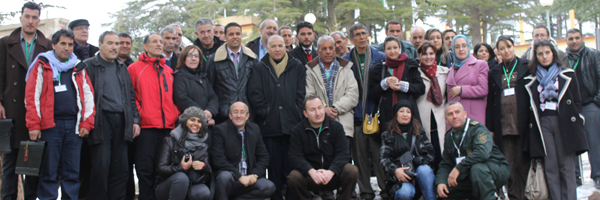 With the support of the Algerian General Directory for Forestry and other
authorities, a conservation strategy and action plan for the Barbary
macaque is under preparation, calling on the expertise of national and
international experts in biology, conservation planning and management.
Algeria is also collaborating in the transnational strategy for the
Cuvier’s gazelle, the Key Biodiversity Areas for plants project, in the
PPI-OSCAN initiative and takes part of the Water 5+5 Strategy adopted at
the First 5+5 Ministerial Water Conference in Algiers, on 31 March 2015.
With the support of the Algerian General Directory for Forestry and other
authorities, a conservation strategy and action plan for the Barbary
macaque is under preparation, calling on the expertise of national and
international experts in biology, conservation planning and management.
Algeria is also collaborating in the transnational strategy for the
Cuvier’s gazelle, the Key Biodiversity Areas for plants project, in the
PPI-OSCAN initiative and takes part of the Water 5+5 Strategy adopted at
the First 5+5 Ministerial Water Conference in Algiers, on 31 March 2015.
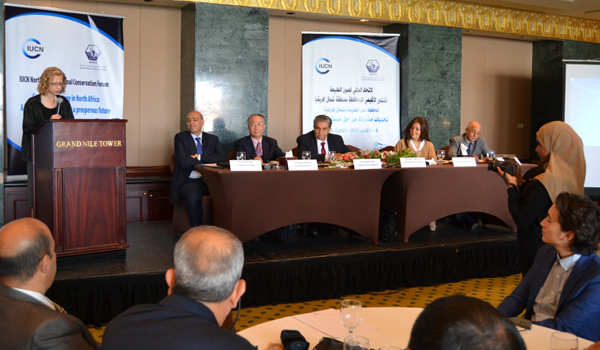 The organization of the IUCN North Africa Conservation Forum in October
2015 with the support of the Ministry of Environment of Egypt and IUCN
Member Arab Office for Youth and Environment (AOYE) has reinforced the
interaction among Members for the identification of priorities in the
forthcoming North Africa Programme 2017-2020, and preparations for
potential recommendations and resolutions to the World Conservation
Congress in 2016.
The organization of the IUCN North Africa Conservation Forum in October
2015 with the support of the Ministry of Environment of Egypt and IUCN
Member Arab Office for Youth and Environment (AOYE) has reinforced the
interaction among Members for the identification of priorities in the
forthcoming North Africa Programme 2017-2020, and preparations for
potential recommendations and resolutions to the World Conservation
Congress in 2016.
The Memorandum of Understanding in January 2014 with the Centre for Environment and Development in the Arab Countries and Europe (CEDARE) is earmarked to further strengthen cooperation between the two institutions.
The Ministry of Environment, Land and Sea of Italy and the Italian Federation of Parks and Natural Reserves (Federparchi) signed a Memorandum of Understanding with IUCN in March 2014 to support common endeavours related to marine and terrestrial protected areas, species and ecosystems evaluation, cooperation, communication and dissemination.
 Several cooperation activities are being implemented with the support of
various government offices, in particular the High Commissariat for
Water, Forest and Combatting Desertification (HCEFLCD), to help comply
with Aichi biodiversity targets and other international commitments such
as the CBD/Barcelona convention and ICZM related to marine and
terrestrial protected areas, spatial planning, ecotourism and species
conservation.
Several cooperation activities are being implemented with the support of
various government offices, in particular the High Commissariat for
Water, Forest and Combatting Desertification (HCEFLCD), to help comply
with Aichi biodiversity targets and other international commitments such
as the CBD/Barcelona convention and ICZM related to marine and
terrestrial protected areas, spatial planning, ecotourism and species
conservation.
Another line of work offering first results in 2014 has been the Red List of Ecosystems. Within the project POCTEFEX-TRANSHABITAT, the Red List of Forest Ecosystems in Morocco is under validation and will contribute to strengthening conservation planning tools.
Collaboration with Tunisia has been strengthened at national level through a Memorandum of Understanding to jointly work on Key biodiversity areas and strategic planning of ecotourism in the Mediterranean. The conservation strategy and action plan for the Barbary sheep have also involved the national and local administrations together with local experts to achieve a consensus on the priority actions needed to preserve the species at national level.
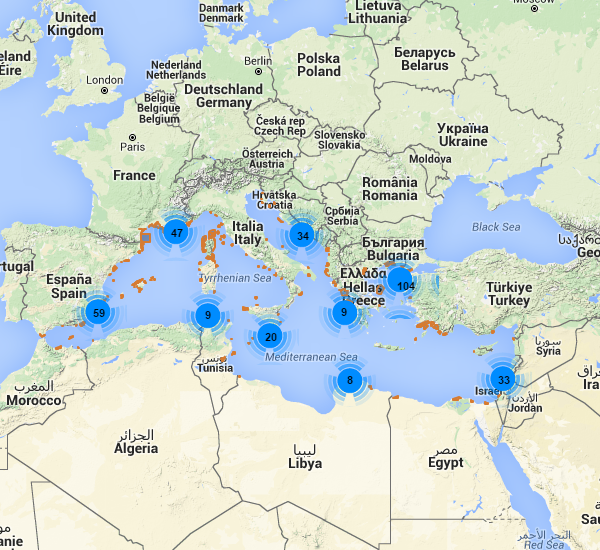 Key initiatives in this area have focused on adaptation to climate change
through participation in the Social, Ecological & Agricultural Resilience
in the Face of Climate Change (SEARCH) project in collaboration with
IUCN ROWA office, particularly concerning the case study in Morocco.
The SEARCH team came up with a 2020 vision identifying two pillars: the
improvement of the living conditions of the population by building and
improving the infrastructure (roads, electricity, water…) and providing
access to basic social services and various economic activities. Further
info:
here.
Key initiatives in this area have focused on adaptation to climate change
through participation in the Social, Ecological & Agricultural Resilience
in the Face of Climate Change (SEARCH) project in collaboration with
IUCN ROWA office, particularly concerning the case study in Morocco.
The SEARCH team came up with a 2020 vision identifying two pillars: the
improvement of the living conditions of the population by building and
improving the infrastructure (roads, electricity, water…) and providing
access to basic social services and various economic activities. Further
info:
here.
The expansion of invasive species across Mediterranean marine protected areas is also related to climate change and being monitored through the MedMIS initiative which has launched a new application for smart phones and an online tool to help managers of marine protected areas (MPAs) control the spread of invasive species in the Mediterranean Sea. The presentation of this tool took place during the workshop on Climate Change and Marine Protected Areas held in Cadaqués (Spain) in April 2014, organized by the Network of Marine Protected Area Managers in the Mediterranean (MedPAN) and the Regional Activity Centre for Specially Protected Areas of the Barcelona Convention (UNEP/MAP RAC/SPA) in collaboration with the Generalitat of Catalunya and IUCN-Med, the French Water Agency Rhône Méditerranée Corse, the Mava Foundation and the Total Foundation. The tool was also presented during the MedPan network regional experience-sharing workshop on monitoring for managing Mediterranean marine protected areas in Tirania (Albania) in November 2014. Further info: here
Two new EU funded projects dealing with climate change have started running in 2015, both under the leadership of the Andalusian government and IUCN Member CMAOT. The Life Natura Blue project aims to the carbon sequestered on marshes and seagrass in Andalusia. These ecosystems are important carbon sinks both because of their high efficiency in assimilating the organic carbon and their capacity for storing it during thousands of years (sequestration) under its roots. However, despite their important role in mitigating the climate change and the important ecological services they provide, their habitats are disappearing or quickly degrading. The AdaptaMed project on the other hand will develop and disseminate adaptive management measures to mitigate the effects of rising global temperatures caused by climate change on key ecosystems. Three nature sites in Andalucia will be participating to exemplify a wetland, a high mountain and a subdesertic coastal area. Key ecosystem services are essential to the socioeconomic development of rural communities in terms of soil retention, pollination, maintenance of pastures, temperature regulation, water supply, prevention of forest fires and desertification.
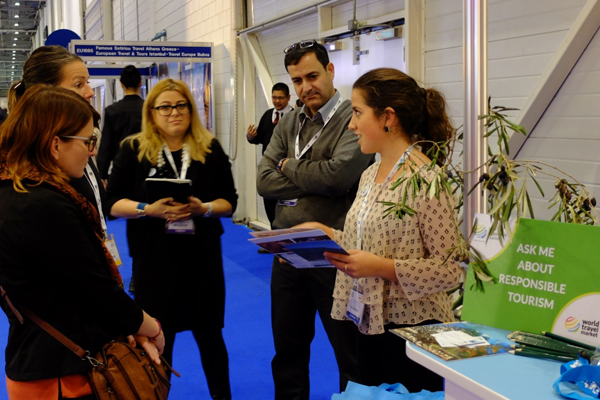 The final Conference of the MEET project held in Barcelona on 10-11
December 2015 has been the last public event of the 3-year "Mediterranean
Experience of Eco-Tourism" project, co-funded by the EU Cross Border
Cooperation Programme ENPI-MED under the leadership of
Federparchi-Europarc Italy and involving eight Mediterranean countries
(Italy, France, Spain, Greece, Malta, Jordan, Lebanon and Tunisia). The
main achievement of the project has been the establishment of a Network
of 24 Protected Areas and the setting up of a Catalogue of ecotourism
packages designed and managed by the same Parks and local stakeholders.
The final Conference of the MEET project held in Barcelona on 10-11
December 2015 has been the last public event of the 3-year "Mediterranean
Experience of Eco-Tourism" project, co-funded by the EU Cross Border
Cooperation Programme ENPI-MED under the leadership of
Federparchi-Europarc Italy and involving eight Mediterranean countries
(Italy, France, Spain, Greece, Malta, Jordan, Lebanon and Tunisia). The
main achievement of the project has been the establishment of a Network
of 24 Protected Areas and the setting up of a Catalogue of ecotourism
packages designed and managed by the same Parks and local stakeholders.
The MEET partnership has involved eight other organizations, including IUCN-Med and ROWA, the French National Parks Association, MedPAN, Lazio and Catalunya regional governments, the Jordan Royal Society for Conservation of Nature and the Al-Shouf Biosphere Reserve in Lebanon. The final conference has helped finalize the policy recommendations and launch the follow up of the project as a “MEET Destination Management Organization”.